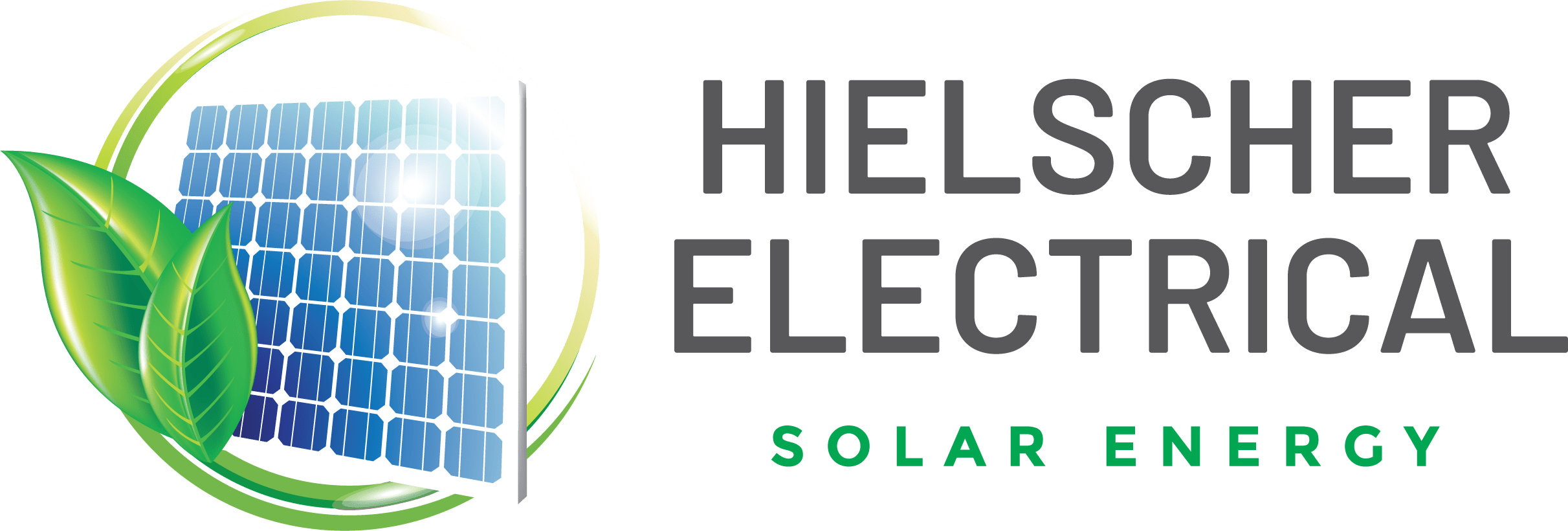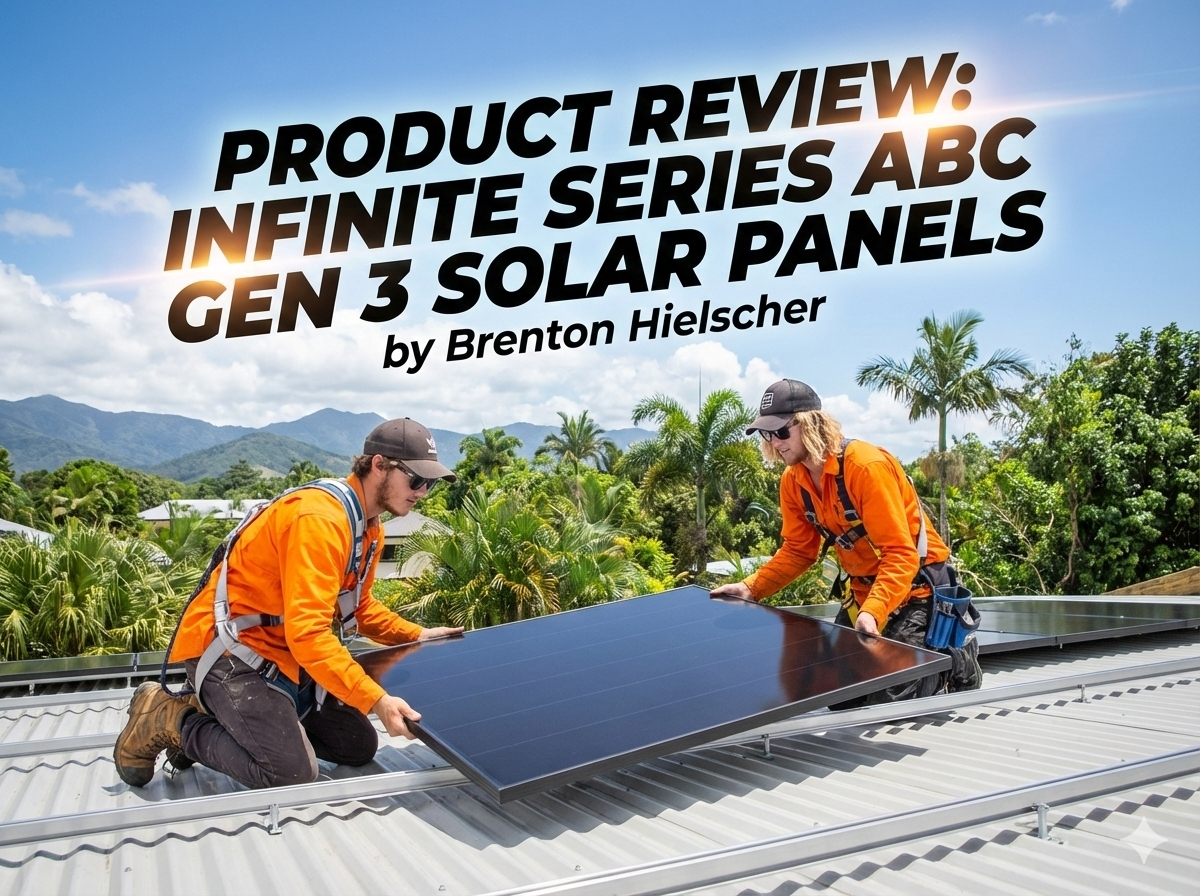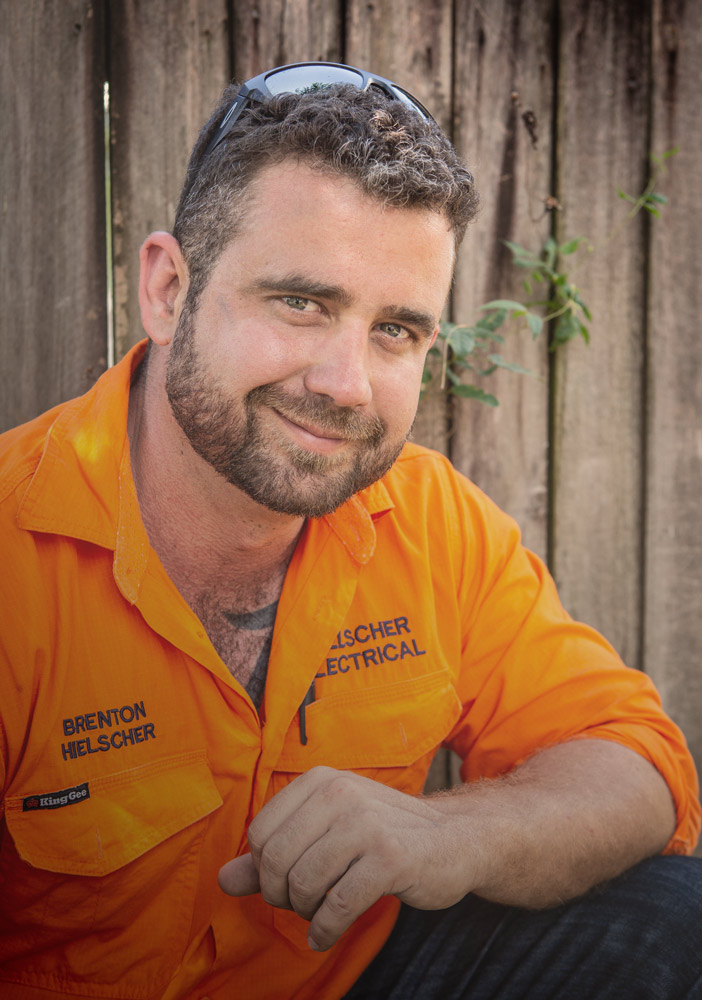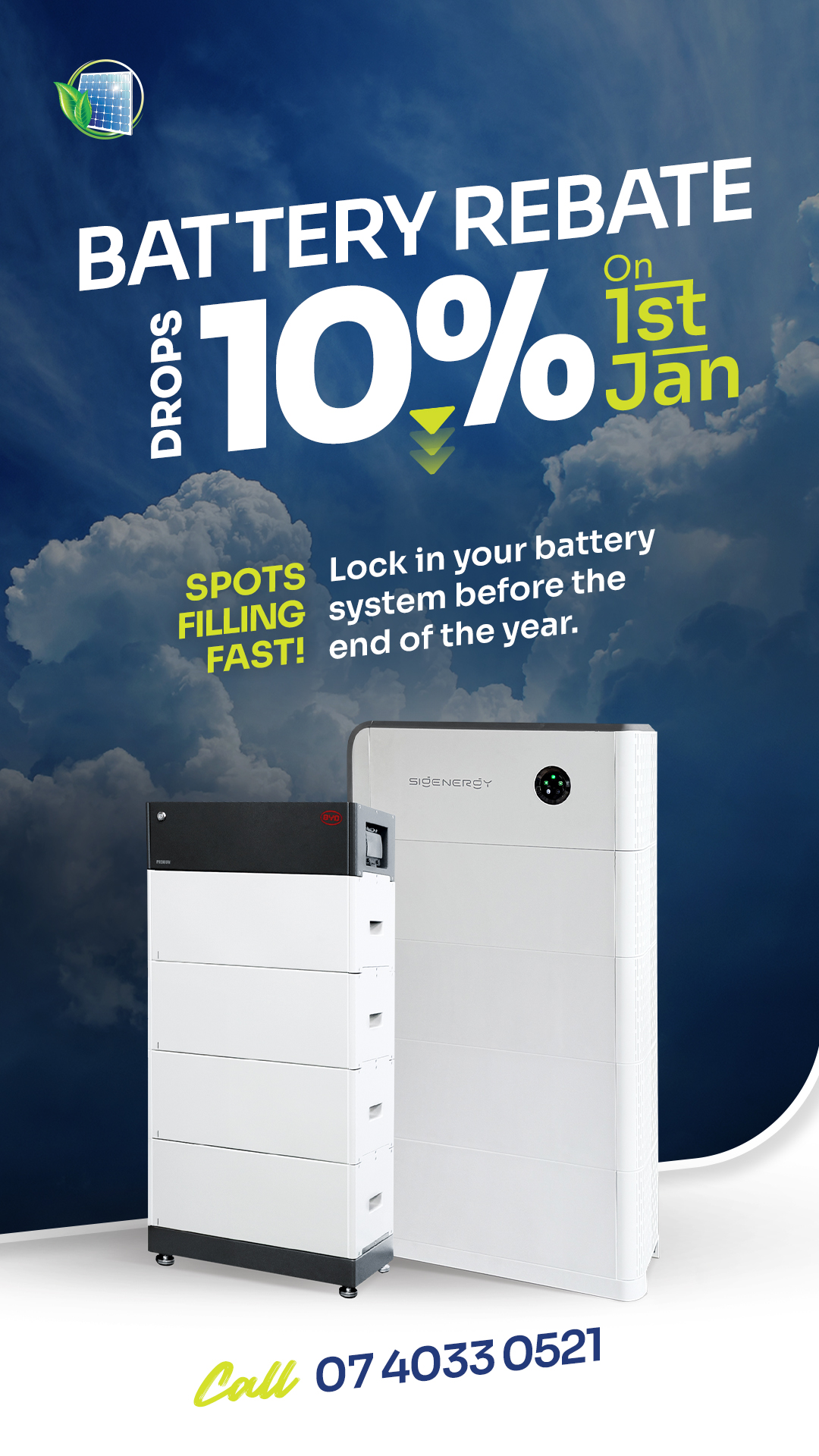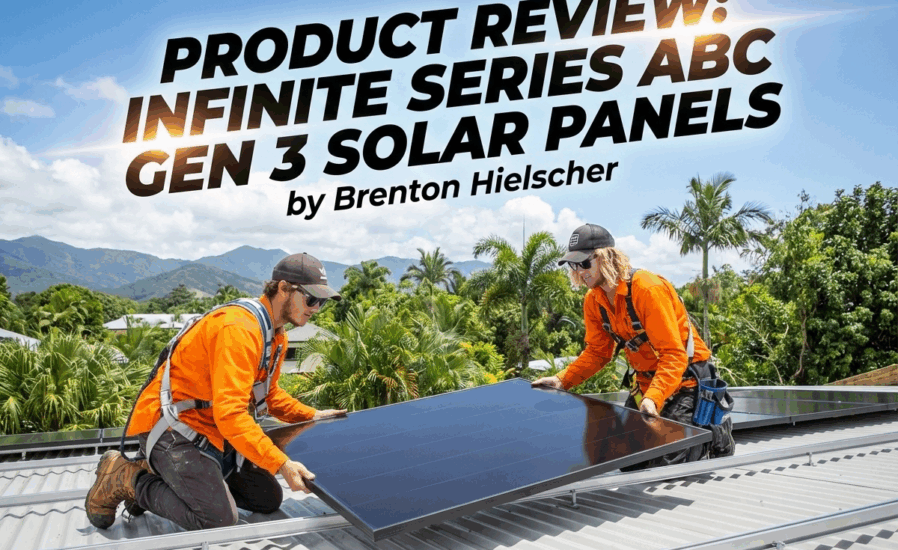
The first time I stood on a Cairns roof looking down at a string of Aiko Neostar solar panels, it was one of those classic Far North Queensland days – metal roof too hot to touch, humidity sitting somewhere between “sauna” and “swimming pool with a lid on”.
The system was on a compact, chopped‑up roof where fitting a decent‑sized array had always been a puzzle. With older 330–370 W panels it would have been a compromise job. Swapping those out for high‑efficiency Aiko Neostar 3P54 modules suddenly turned the whole design on its head: fewer panels, more power, and still enough space to work safely along the edges.
If you’ve been typing “Aiko Neostar solar panels Cairns” or “Aiko Solar Panels Cairns” into Google and wondering whether these shiny new modules are just hype, this is for you. I’ll walk you through who Aiko are, what their Infinite Series ABC Gen 3 Neostar panels actually bring to the table, and how they behave in the very specific conditions we see from Gordonvale to Port Douglas and out onto the Tablelands.
The new kid with serious credentials
On paper, Aiko looks like a newcomer. They only started selling complete panels in 2023. But under the bonnet they’re anything but new.
The company was founded in China in 2009 and spent over a decade specialising in high‑efficiency solar cells rather than finished modules. In that time they’ve built six major manufacturing bases, added three R&D centres across China and Europe, and shipped more than 170 GW of cells and modules worldwide. That’s not the profile of a boutique experiment; it’s a proper industrial‑scale manufacturer.
Their focus has been on ABC – All Back Contact – cell technology, and that’s important. The basic idea is simple but powerful: instead of splashing silver busbars all over the sun‑facing side of the cell, every electrical contact is moved to the rear. That gives you more active surface area on the front, a cleaner aesthetic, and the opportunity to squeeze more watts out of each square metre.

🌞 Save Money and Electricity 🌞
Get Solar Panels for Your Home!
🏠 Interested in solar panels? ☀️
Contact Hielscher Electrical and Solar now for a FREE onsite assessment and quote. Start saving today! 💰💡
Aiko’s ABC modules have already picked up serious hardware: Intersolar Awards and a Red Dot design award, along with BloombergNEF Tier 1 status. Those badges don’t guarantee perfection, but they do tell me this isn’t a fly‑by‑night brand.
Here in Australia, Aiko has opened a local office, partnered with distributors like Solar Juice and AC Solar Warehouse, and moved quickly to get their products onto the CEC approved list. The result is that Aiko Neostar solar panels are now turning up in quotes across Cairns and North Queensland far more often than you’d expect for a supposedly “new” brand.
From cells to Infinite Series – what makes Gen 3 different?
The panels most people are asking me about are from the Infinite Series ABC Gen 3 family – in particular the Neostar 3P54 and its all‑black siblings, the 3S54 and 3S+54.
NEOSTAR 3S54 Mono-Glass 465W-495W AIKO-A-MCE54Mb Datasheet
These are standard‑size residential modules: 54 cells, measuring roughly 1762 × 1134 mm, which is just under the 2 m² size that Australian installers consider the sensible limit for safe handling. Where they break the mould is in how much power they squeeze into that footprint.
According to Aiko’s own datasheets, the Neostar 3P54 mono‑glass comes in power classes from 470 to 500 W, with module efficiency up to 25.0% under standard test conditions. The 3S and 3S+ variants top out a little lower in wattage but still sit comfortably in the 23–24% efficiency band. In Australian terms, that puts them at or near the top of the residential efficiency ladder.
The Infinite Series Gen 3 isn’t just “Gen 2 but more watts”. There are a couple of key design shifts:
- Aiko has tightened the cell layout into what they call a ZeroGap configuration, trimming the dead space between cells and increasing the light‑active area of the panel by around 4–5%.
- They’ve moved away from the traditional silver paste interconnection and into a copper‑based system. This reduces electrical resistance, avoids the harsh high‑temperature firing step that can damage wafers, and produces interconnects with tested tensile strengths above 5 N.
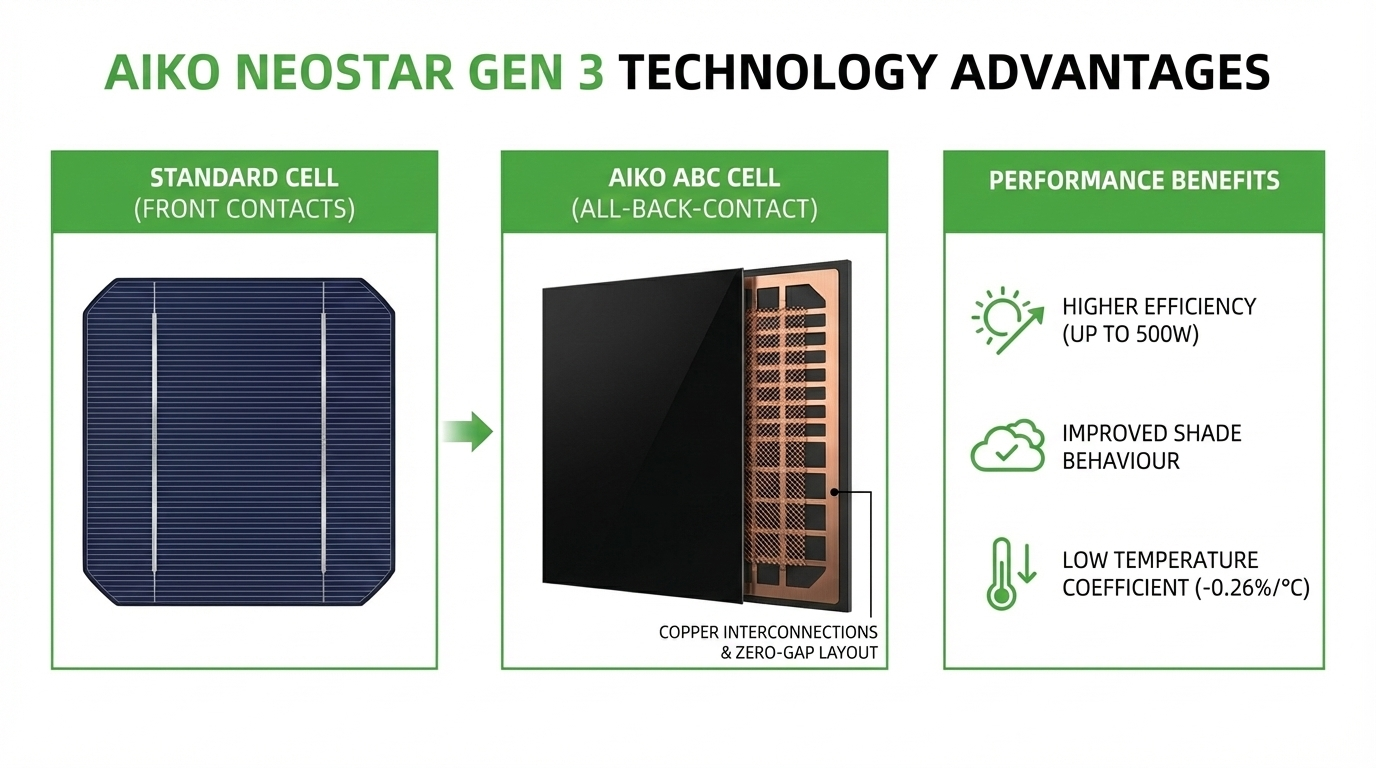
That copper shift matters in two ways for us in the tropics. First, lower resistive losses and better current handling mean the panel holds performance more gracefully when it’s working hard under Cairns’ intense irradiance. Second, stronger interconnects are less likely to develop micro‑cracks when the roof flexes in a blow or cops a bit of hail.
On top of that, Aiko has been very deliberate about shading behaviour. Their ABC layout and bussing allow the modules to keep a surprising amount of current flowing when parts of the panel are shaded, and independent testing by TÜV Nord suggests up to 30% more power under specific partial shading conditions compared with mainstream TOPCon modules. TÜV Rheinland has even given them a Class A shading performance classification, which is rare air for a standard‑format module.
The marketing can get a bit breathless around that, but the underlying engineering is solid.
The Neostar 3P54, 3S and 3S+ – what you’re actually getting
In practical terms, when someone asks me about Aiko Neostar solar panels Cairns, they’re usually talking about one of three Gen 3 models:
The Neostar 3P54 mono‑glass is the all‑rounder. It uses Aiko’s third‑generation ABC cells in a single‑glass, polymer‑backed construction. Power ratings range from about 470 W up to 500 W, with efficiencies peaking at 25.0%, making it the highest‑efficiency standard‑format residential panel widely available here at the moment.The frame is black, the backsheet is light, and the panel weighs around 20.6 kg, which is surprisingly manageable given the wattage.
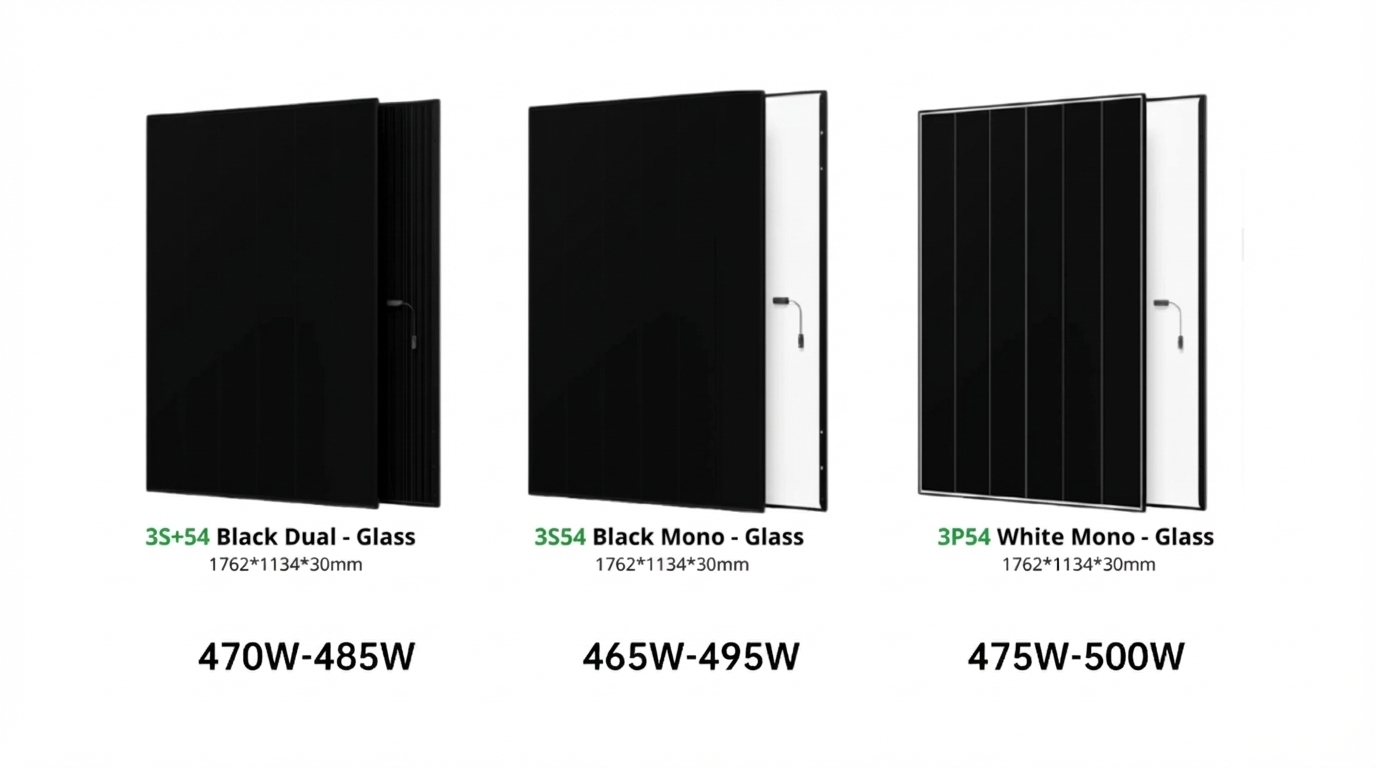
The Neostar 3S54 shares most of that DNA but is tuned more towards aesthetics. It’s an all‑black mono‑glass module, generally in the 460–475 W band, trading a sliver of efficiency for a very uniform, architect‑friendly look. On a dark COLORBOND or tiled roof, a bank of 3S panels blends in beautifully.
The Neostar 3S+54 steps into dual‑glass territory, sandwiching the cells between two panes of tempered glass. It sits around 475 W and is also all black. Dual‑glass construction can offer even better long‑term encapsulation and UV resilience, at the cost of a bit of extra weight and sometimes marginally trickier handling.
All three versions share a couple of core electrical traits that matter a lot in Cairns:
The temperature coefficient of power is –0.26% per degree Celsius, which is significantly better than the –0.3‑something figures you still see on many PERC modules. Put simply, for every degree the cell temperature rises above 25°C, the panel loses a bit less power than its more old‑fashioned cousins. On a hot tin roof in Edmonton, that adds up.
They’re all backed by 30‑year performance warranties, with no more than 1% degradation in the first year and 0.35% per year thereafter, leaving at least 88.85% of nameplate output at year 30. Product warranties sit at 15 years as standard on the manufacturer datasheets, but in Australia we’re increasingly seeing Neostar 3P and 3S lines sold with 25‑year product cover through local channels.
That warranty story is one of the reasons I’m comfortable specifying these panels on high‑end residential and commercial jobs in North Queensland, despite the brand’s short local history.
Hot roofs, cyclones and salt air – how they cope in FNQ
When I’m considering any panel for a Cairns or North Queensland install, I mentally run it through three local “tests”: heat, weather and salt.
Heat and high irradiance
Cairns is essentially a giant test lab for thermal behaviour. I’ve seen roof surface temperatures north of 70°C in the build‑up. Panel cell temperatures can easily sit 25–30°C above ambient in those conditions.
With a –0.26%/°C temperature coefficient, the Neostar 3P54 series holds onto more of its rated power when it’s cooking. On a 65°C cell temperature, a typical older PERC panel at –0.36%/°C will have lost around 14–15% of its power relative to STC, where a Neostar is closer to 10–11%. That difference doesn’t sound dramatic until you look at annual yield and payback numbers over a 20‑ to 30‑year span.
Aiko also talks about “high temperature restriction” tech designed to limit hotspot formation and reduce heat build‑up under soiling by roughly 30%. I haven’t seen a controlled Cairns‑specific field trial on that yet, but it fits with the rest of the ABC design philosophy: keep current flowing in a way that doesn’t punish one shaded or dirty area too aggressively.
Cyclones, hail and mechanical stress
On the weather front, the Neostar Gen 3 modules tick most of the boxes I look for in cyclone‑rated work. They use 3.2 mm tempered glass on the front, are certified against 40 mm hail at 27.5 m/s, and carry the usual suite of salt mist, ammonia, dust and sand certifications, including ratings appropriate for high‑wind and cyclone regions.
Independent reliability testing is encouraging as well. Aiko’s mono‑glass NEOSTAR modules have been recognised as Top Performers in PV Evolution Labs testing across multiple categories, including thermal cycling, mechanical load and hail, which gives me more confidence when we’re designing arrays in exposed locations like Trinity Park or the northern beaches.
The move to copper interconnections also plays into cyclone resilience. Copper joints with higher tensile strength are inherently more forgiving when the roof structure flexes under wind load. I still design mounting systems conservatively – rail spacing, clamp positions and fixings are non‑negotiable – but it’s reassuring to know the cell wiring itself is less fragile than some of the older silver‑based designs.
Partial shading on real roofs
The final local test is shade. Palms, TV antennas, neighbouring second storeys – they all conspire to nibble at output, especially in the morning and late afternoon.
AIKO’s partial shading optimisation is not a magic wand, but it does change how gracefully the panel degrades when a corner or string of cells is shaded. TÜV Nord’s testing, which shows up to 30% higher output in particular shading patterns compared with mainstream TOPCon panels, is believable given the ABC layout and internal wiring.
At the same time, independent testers have rightly called out that Aiko’s marketing has been a little too exuberant in the way they talk about shading. Shade is still the enemy. Under heavy, sustained shade, even Neostar panels will see big drops in output – they just tend to fall off a bit more gently and recover more quickly as the sun moves than some older half‑cut designs.
In my own designs, I treat the shading optimisation as a nice bonus, not the primary reason to choose the brand. I’m still rearranging strings, using multiple MPPTs, considering optimisers or micros for problematic sections, and sometimes telling clients that a heavily shaded roof is better suited to other solutions entirely.
Efficiency and yield – where Neostar sits in the arms race
Aiko has made headlines because they keep nudging efficiency records upwards.
Their Neostar 2P 480 W panel – the Generation 2 mono‑glass design – was launched with a module efficiency of 24.3% and was touted, quite credibly, as the highest‑efficiency residential panel available in Australia at the time. That was already ahead of big‑name panels from LONGi, REC and Maxeon that cluster in the low‑22 to low‑23% zone.
The Infinite Series ABC Gen 3 Neostar 3P54 pushed the envelope further. Manufacturer data and third‑party write‑ups put its efficiency up to 25.0% in the top 500 W bin, with the rest of the range sitting in the high‑23s to mid‑24s. Reports from All Energy in Melbourne refer to it as the first 500 W panel under 2 m² with 25% efficiency, which is a neat milestone in itself.
In practical terms, what does that mean on a North Queensland roof?
Imagine you’ve got space for twenty 54‑cell panels on your best‑orientated section. Fill it with typical 415 W modules and you’ve got an 8.3 kW array. Fill it with 490–500 W Neostar 3P54s and you’re nudging 9.8–10 kW in the same footprint. Over the system’s life, AIKO and independent analysts estimate up to 15% more total energy yield compared with standard TOPCon panels of the same external dimensions.
For homes in Cairns, that extra generation translates into:
- more headroom for daytime air‑conditioning
- more surplus to feed a battery if you add one later
- more margin to accommodate EV charging down the track
All without needing to bolt more steel or glass to your roof.
Warranty, reliability and the “new brand” question
On paper, Aiko’s warranty package is excellent.
For the Neostar 3P54 and its siblings, the performance warranty runs for 30 years, capping first‑year degradation at 1% and annual loss thereafter at 0.35%. That leaves you with at least 88.85% of the original nameplate power after three decades, which is right up there with the best of the established premium brands.
The product warranty story is a bit more nuanced. Globally, Aiko lists a 15‑year product warranty on the NEOSTAR 3P54, with the option to extend to 25 years. In the Australian market, we’re already seeing distributors and retailers offering 25‑year product cover as standard on Neostar installations, bringing them in line with REC and others.
Aiko’s BloombergNEF Tier 1 status and independent lab results from PVEL help answer the inevitable “will this company still be around in 20 years?” question. And the fact they’ve set up a local presence, not just dumping containers here, is a big tick in my book.
The one thing they don’t yet have is a long, boring Australian track record. We don’t have a decade of Neostar panels quietly doing their thing on roofs in Edmonton or Earlville. What we do have is early field data, very strong lab performance, and several hundred Australian owner reviews on SolarQuotes averaging around five stars.
As an engineer, I weigh all of that together. For clients who want cutting‑edge performance and are comfortable backing a relatively new brand with strong fundamentals, Aiko Neostar is an easy recommendation. For clients who value “we’ve had this brand here for 15 years and it’s boringly reliable” above all else, there are still very defensible choices in the Qcells, REC and Trina camp.

🌞 Save Money and Electricity 🌞
Get Solar Panels for Your Home!
🏠 Interested in solar panels? ☀️
Contact Hielscher Electrical and Solar now for a FREE onsite assessment and quote. Start saving today! 💰💡
Are Aiko Neostar solar panels a smart choice for Cairns?
So, where do I land when someone asks whether Aiko Neostar solar panels in Cairns are the right call?
If you’ve got a roof with generous north‑facing space, modest daytime loads and you simply want a solid, cost‑effective system, a well‑chosen 415–440 W panel from a Tier 1 brand will still do a great job. You don’t need 25% efficiency to get a strong result.
But in many of the homes I see – split‑level houses in Whitfield, newer estates with hip roofs, beachfront properties with shading on one side – the efficiency and thermal behaviour of the Neostar Gen 3 panels make a real difference. You can fit more power into the good parts of the roof, cope better with Cairns heat, and lean on a very generous warranty for peace of mind.
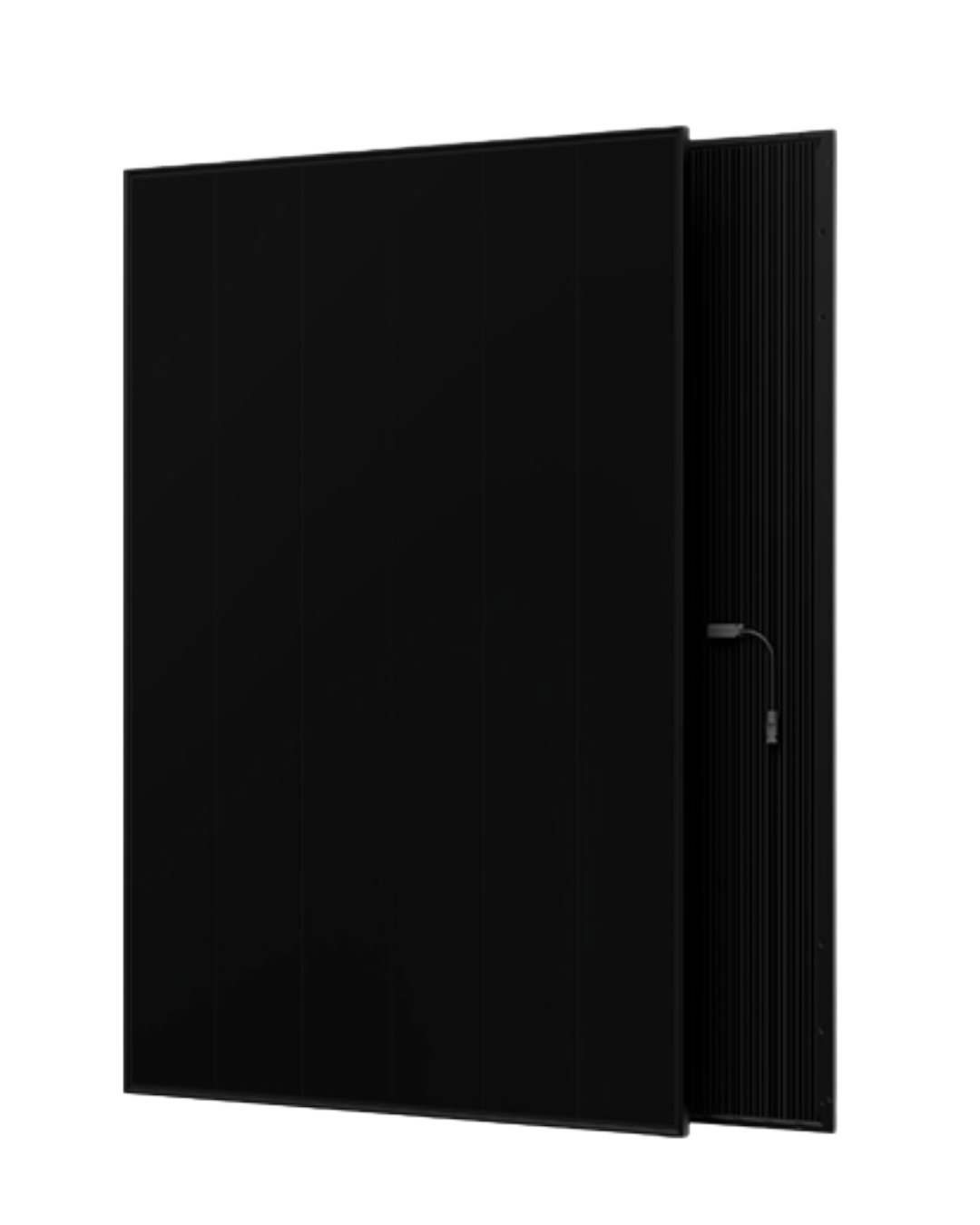
There’s also the aesthetics angle. If you care about how the system looks from the street or from your deck, the all‑black 3S and 3S+ Neostar panels are some of the best‑looking options currently on the market, without sacrificing much in performance.
Price‑wise, Aiko sits in an interesting place. Earlier Neostar models were described by SolarQuotes as being towards the budget end of the market relative to their performance, and Gen 3 modules appear to continue that theme: not the cheapest panel out there, but very competitive on a dollars‑per‑watt basis once you account for higher output and balance‑of‑system savings.
If you’re the sort of person who ends up accidentally typing “Aike Solar Panels Cairns” into your search bar at midnight because you’re ten tabs deep in spec sheets, there’s a good chance Aiko’s Infinite Series will tick a lot of your boxes.
My recommendation as a Cairns local expert
Speaking as the bloke who has to actually get these things onto your roof safely and sign his name to the design, here’s how I sum it up.
For homes and small businesses in Cairns and North Queensland that:
- have limited or awkward roof space,
- plan to run serious daytime loads – air‑conditioning, pools, EVs, home offices,
- care about aesthetics as well as performance, and
- are comfortable backing a relatively new but well‑credentialled manufacturer,
Aiko Neostar solar panels from the Infinite Series ABC Gen 3 range are an excellent option. In many of my designs now, I’ll model them alongside top‑tier alternatives and quite often they come out ahead on lifetime energy yield and value.
If you’re more conservative and want the longest possible local track record, we can absolutely look at brands with a decade or more of Australian history. There’s no one “right” panel for everyone.
What I wouldn’t do is choose solely on a single headline – be it wattage, efficiency or price. The smart move is to look at how a panel’s characteristics line up with your roof, your usage and our climate.
If you’re in Cairns or anywhere in North Queensland and you’d like a system design that compares Aiko Solar Panels Cairns against other good options on your actual roof, that’s exactly what my team at Hielscher Electrical & Solar does every day. We’ll measure, model, and explain it in plain language – then you can decide whether Aiko’s Infinite Series deserves pride of place on your roof.
Get in contact with Hielscher Electrical now for a free quote and expert advice.
